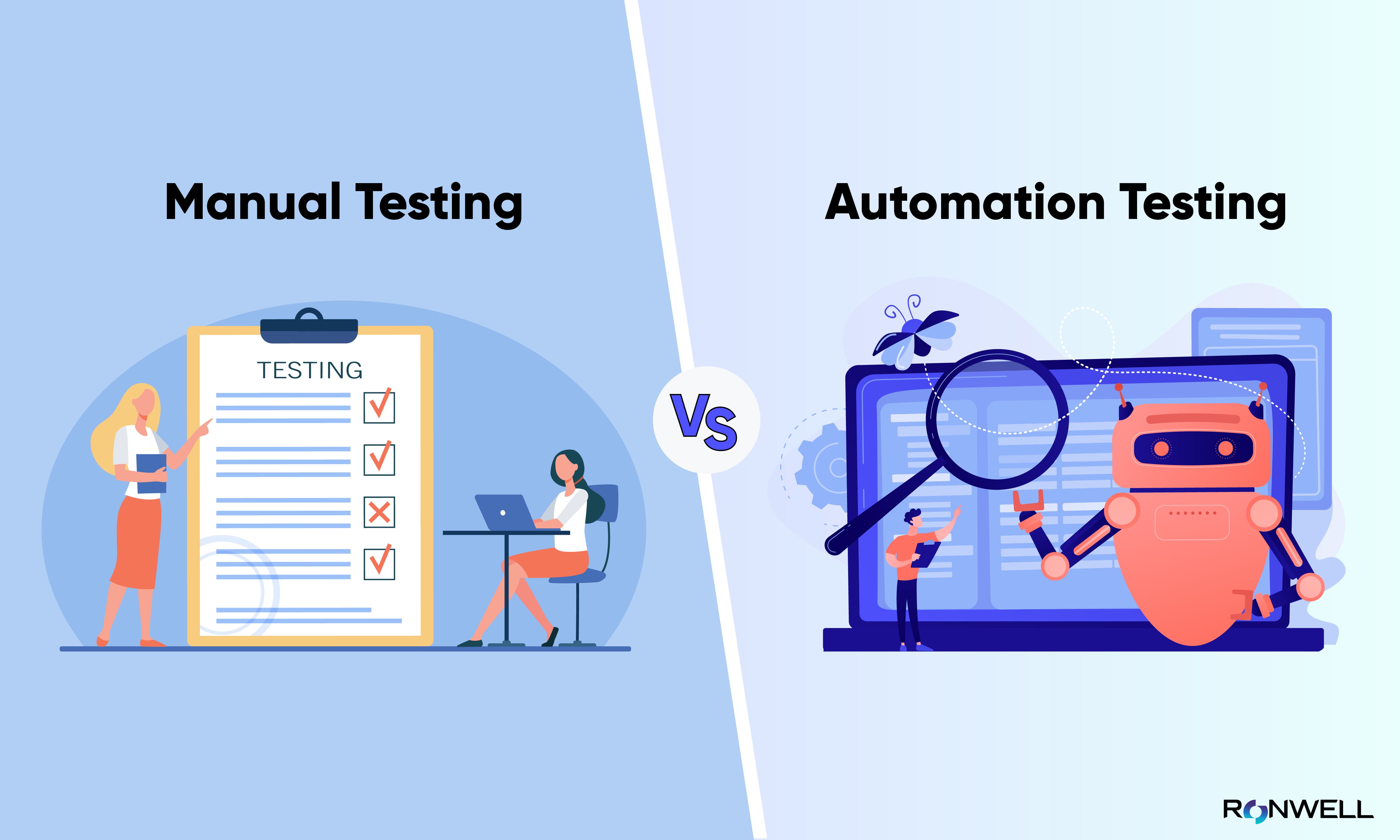The Value of Automation Testing in Agile Development Atmospheres
The Value of Automation Testing in Agile Development Atmospheres
Blog Article
Ensuring Success in Automation Evaluating: Key Metrics, Difficulties, and Solutions Every QA Group Should Know
In the realm of software high quality assurance, the landscape of automation testing is ever-evolving, demanding a careful method to make sure seamless procedures. The trip to understanding automation testing is led with nuances that need a keen eye for monitoring, evaluation, and continuous renovation. As the market propels onward, the pursuit for optimum performance in automation screening stays a continuous quest, urging QA teams to outfit themselves with the expertise and methods crucial for accomplishment.
Importance of Trick Metrics
Understanding the importance of vital metrics is crucial for examining the efficiency and effectiveness of automation screening processes. Key metrics act as quantifiable actions that give important understandings into numerous elements of the screening process, such as examination protection, test execution time, problem thickness, and test instance efficiency. By evaluating these metrics, QA teams can determine traffic jams, inefficiencies, and locations for improvement within their automation testing framework.
One crucial element of vital metrics is their capacity to track progression and check the total wellness of the screening procedure (automation testing). They enable stakeholders to make educated choices based on data-driven understandings, which can lead to extra effective testing methods and better resource allocation. Additionally, essential metrics can assist groups set practical goals, determine the success of automation initiatives, and demonstrate the ROI of automation screening initiatives

Common Difficulties Encountered
Challenges generally encountered in automation testing procedures can considerably influence the general performance and performance of QA groups. Among the major challenges is the choice of the right test cases for automation. Not all test instances appropriate for automation, and selecting the wrong ones can lead to wasted time and resources. In addition, keeping examination manuscripts can be a challenging job, particularly as the application undergoes frequent adjustments. Examination manuscript maintenance requires continuous updates and alterations to guarantee they mirror the present performance precisely. One more typical challenge is the first investment needed for establishing automation structures and devices. This can be an obstacle for some companies, specifically smaller sized ones with limited budgets. Automation testing may not cover all elements of testing, such as functionality and customer experience testing, which still require manual intervention. Getting over these obstacles needs appropriate planning, tactical test situation selection, durable upkeep processes, ample resources, and a clear understanding of the constraints of automation testing.
Efficient Solutions for Obstacles
To resolve the barriers encountered in automation testing, implementing efficient remedies is important for boosting the performance and efficiency of QA teams. One vital remedy is to purchase durable training programs for QA groups to ensure they have the necessary skills to efficiently use automation devices. Training can link understanding voids, boost understanding of automation frameworks, and improve scripting capabilities, inevitably causing much more effective test creation and implementation.
One more crucial solution is to establish clear communication networks within the QA team and with various other stakeholders, such as developers and official website project managers. Effective communication aids in aligning expectations, sharing progression updates, and quickly addressing issues or roadblocks that may emerge throughout the automation screening procedure.

Tracking and Evaluation Techniques
Carrying out effective surveillance and evaluation methods is crucial for making sure the success and effectiveness of automation testing processes. By using tracking devices, QA teams can track the efficiency of examination scripts, identify traffic jams, and determine locations for renovation. Real-time tracking permits for quick detection of issues, allowing rapid reaction and resolution. Furthermore, analyzing test results and metrics gives beneficial understandings right into the quality of the software being checked and the effectiveness of the screening strategy.
One secret strategy in monitoring and evaluation is the usage of dashboards that settle appropriate metrics and KPIs in an aesthetically easily accessible style. These control panels use an extensive overview of test execution condition, examination insurance coverage, flaw fads, and various other vital information. Consistently examining and assessing these dashboards can help QA groups make educated decisions, focus on jobs, and enhance testing initiatives.
Additionally, applying automated alerts and notices based on predefined thresholds can enhance positive monitoring and timely treatment. By establishing informs for efficiency deviations or examination failings, teams can resolve issues quickly and avoid them from rising. Generally, tracking and evaluation strategies play a vital function in ensuring the performance and success of automation screening efforts.
Constant Improvement Techniques
Enhancing the effectiveness of automation screening processes demands the regular discover this refinement of strategies and methods. Continuous renovation strategies are pivotal for QA teams to adapt to progressing modern technologies and provide high-grade software. One essential method to boosting automation screening processes is to perform routine evaluations and retrospectives. By assessing previous screening cycles, teams can identify traffic jams, inadequacies, and locations for improvement. Implementing comments loops and including lessons learned right into future screening structures can produce substantial enhancements gradually.

Conclusion
To conclude, it is essential for QA teams to understand the key metrics, difficulties, and services in automation screening to ensure success. By very carefully monitoring and evaluating data, carrying out efficient options to common challenges, and constantly enhancing approaches, QA groups can optimize their screening processes and deliver high-grade software. Abiding by these practices will ultimately cause extra effective and effective automation testing practices.
By assessing these metrics, QA teams can determine bottlenecks, inadequacies, and locations for enhancement within their automation testing framework.
In addition, vital metrics can assist groups established reasonable goals, measure the success of automation efforts, and show the ROI of automation testing initiatives.
Obstacles frequently run into in automation screening procedures can dramatically impact the general effectiveness and performance of QA groups. Automation screening may not cover all elements of testing, such as functionality and user experience screening, which still call for manual intervention.In verdict, it is critical for QA groups to comprehend the key metrics, obstacles, and solutions in automation testing to ensure success.
Report this page